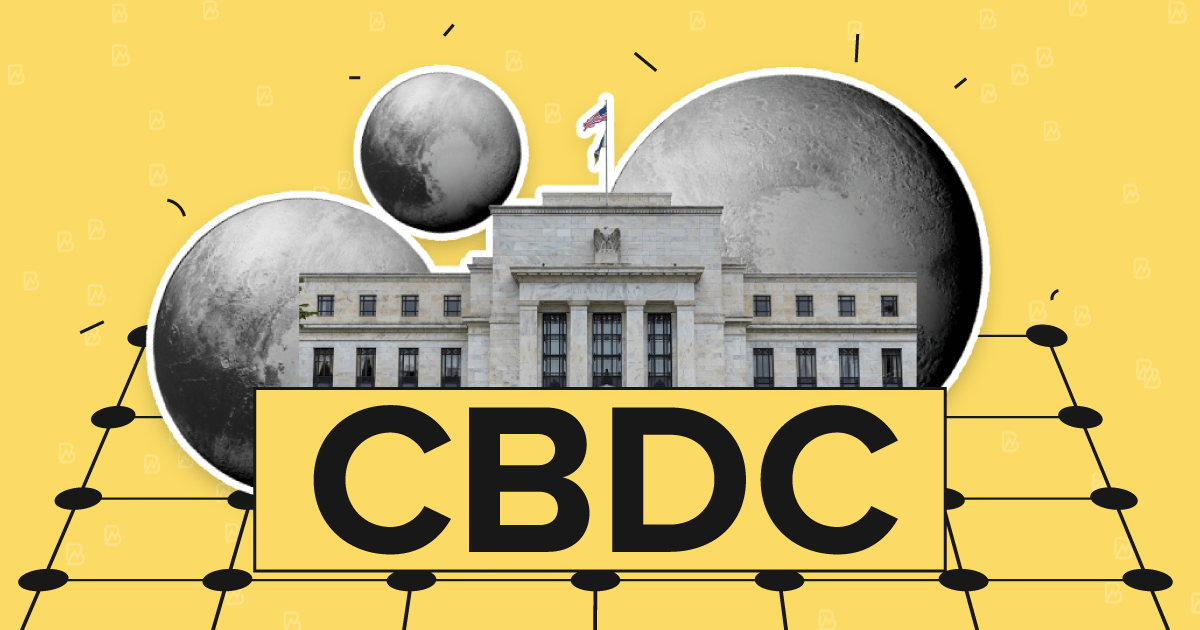The Future of Finance: A Detailed Look at Central Bank Digital Currencies
In an era of rapid digital advancements, the financial landscape is on the brink of a major transformation. This blog post delves into the intricate world of Central Bank Digital Currencies (CBDCs), exploring their defining characteristics, the driving forces behind their rising prominence, and the comprehensive scope of this discussion.
Central Bank Digital Currencies (CBDCs) are a hot topic in the financial world, and for good reason. These digital currencies, issued by central banks, have the potential to reshape the way we transact, save, and invest. In this comprehensive guide, we will explore the many facets of CBDCs, from their historical roots to their future impact on the global economy.
Historical Perspective

The Evolution of Money and Currency
To comprehend the significance of CBDCs, we must first take a step back in time. The concept of money and currency has evolved over millennia, from barter systems to physical coins and paper bills. As societies developed, so did the need for more efficient means of exchange. This evolution paved the way for modern financial systems.
A Brief History of Central Banking
Central banking, as we know it today, has a complex history. Central banks have played a critical role in managing a nation’s money supply, stabilizing its currency, and controlling inflation. The roots of central banking can be traced back to the establishment of the Bank of Sweden in the 17th century.
Predecessors to CBDCs: Digital Payment Systems
Before CBDCs emerged as a concept, various digital payment systems laid the groundwork for the transition to fully digital currencies. Systems like PayPal and electronic funds transfers in the banking sector set the stage for the idea of a digital national currency.
What Are Central Bank Digital Currencies?
The Concept and Definition of CBDCs
At the core, CBDCs represent a digital form of a nation’s fiat currency, issued and regulated by the central bank. Unlike cryptocurrencies such as Bitcoin, which operate on decentralized blockchain networks, CBDCs are centralized and typically involve a digital ledger maintained by the central bank.
Different Forms of CBDCs (Retail vs. Wholesale)
CBDCs come in various forms, but they can be broadly categorized into two main types: retail and wholesale. Retail CBDCs are designed for use by the general public, while wholesale CBDCs are tailored for financial institutions and large-scale transactions. The distinction between these forms is crucial as it impacts accessibility and use cases.
How CBDCs Differ from Traditional Digital Currencies
CBDCs are often compared to traditional digital currencies like digital representations of the U.S. dollar in a bank account. The primary difference lies in the issuer and the underlying technology. CBDCs are issued and regulated by the central bank, ensuring their stability and legal status.
Benefits of CBDCs
Enhanced Security and Fraud Prevention
One of the standout features of CBDCs is their enhanced security. Transactions are recorded on a secure digital ledger, making them less susceptible to fraud and counterfeiting. This heightened security can instill trust in users and reduce the need for physical security measures.
Improved Monetary Policy Implementation
CBDCs offer central banks a more direct and precise tool for implementing monetary policy. With real-time data on money flows, central banks can make more informed decisions and adjust interest rates and money supply with greater accuracy.
Financial Inclusion and Accessibility
A significant promise of CBDCs is their potential to bring financial services to those who have been excluded from the traditional banking system. In many parts of the world, people lack access to basic financial services, and CBDCs can bridge this gap by providing a secure and low-cost alternative.
Reducing Transaction Costs
In a digital economy, CBDCs can significantly reduce transaction costs. Traditional financial transactions often involve intermediaries and fees. With CBDCs, peer-to-peer transactions become more cost-effective, benefiting businesses and individuals alike.
Countering Cryptocurrencies and Private Digital Currencies
As cryptocurrencies and private digital currencies gain popularity, central banks are exploring CBDCs as a means to retain control over their national monetary systems. CBDCs can provide an alternative to private digital currencies and ensure the central bank’s continued role in currency issuance and regulation.
Challenges and Concerns
Privacy and Surveillance Issues
While CBDCs offer security benefits, they also raise concerns about user privacy. Transactions on a CBDC network can be closely monitored, and privacy advocates argue that this level of surveillance can infringe upon individual liberties. Striking the right balance between security and privacy is a complex challenge.
Impact on Commercial Banks and Intermediaries
CBDCs have the potential to disrupt the traditional roles of commercial banks and financial intermediaries. If people can hold accounts directly with the central bank, it may reduce the need for commercial banks as intermediaries for basic financial services. This transformation could impact the revenue models of banks.
Technological and Infrastructure Challenges
Transitioning to a CBDC system involves upgrading existing financial infrastructure and implementing cutting-edge technology. Blockchain or distributed ledger technology (DLT) must be robust and scalable. Developing and maintaining this infrastructure is a considerable challenge for central banks.
Monetary Policy Implications
CBDCs could change the way central banks conduct monetary policy. The direct access to digital currency could lead to more significant fluctuations in money supply, impacting traditional tools like interest rates. Central banks must adapt their policy framework to accommodate this new landscape.
The Global Landscape of CBDCs
Leading Countries in CBDC Development
Several countries are leading the charge in CBDC development. China, for example, has made significant progress with its digital yuan, conducting large-scale pilot programs. The United States, European Union, and Japan are also actively exploring CBDCs.
Case Studies of CBDC Pilots and Trials
Real-world testing is vital for the successful adoption of CBDCs. Sweden, for instance, has been testing its e-krona in a controlled environment. These case studies provide valuable insights into the challenges and opportunities associated with CBDCs.
International Collaborations and Regulatory Considerations
As CBDCs transcend national boundaries, international cooperation and regulatory harmonization become imperative. Organizations like the Bank for International Settlements (BIS) are facilitating discussions among central banks to ensure that CBDCs can operate seamlessly across borders.
Technical Underpinnings
Blockchain and Distributed Ledger Technology (DLT)
The technical foundation of CBDCs is often blockchain or DLT. These technologies offer transparency, immutability, and security. While there are different approaches to implementing CBDCs, the choice of technology is crucial in ensuring the integrity of the digital currency.
Digital Wallets and Smart Contracts
Users access and transact with CBDCs through digital wallets. These wallets can be hardware-based, software-based, or even integrated into existing banking apps. They enable not only simple transactions but also the execution of smart contracts, self-executing agreements that can automate complex financial processes.
Security and Encryption Measures
CBDCs demand robust security measures. These digital currencies need to be protected from cyber threats and fraud. Strong encryption and cybersecurity protocols are implemented to safeguard the integrity of the CBDC system.
CBDC Adoption and Implementation

Phases of CBDC Rollout
The adoption of CBDCs typically occurs in phases, starting with research and development, followed by pilot programs and controlled releases. These phases are designed to test the system’s integrity and ensure a smooth transition.
User Onboarding and Adoption Strategies
For CBDCs to succeed, user onboarding and adoption strategies are vital. Central banks employ various methods to encourage users to transition to digital currency. These strategies often involve public education campaigns, incentives, and partnerships with businesses.
Public Awareness and Education Campaigns
Educating the public about CBDCs is essential for their successful implementation. These campaigns aim to inform people about the advantages and functionalities of CBDCs. Public awareness helps build trust and facilitates adoption.
The Role of Commercial Banks
How CBDCs Impact Traditional Banking
CBDCs have the potential to disrupt the traditional role of commercial banks. If individuals and businesses can hold accounts directly with the central bank, this reduces the need for intermediaries. Commercial banks must adapt their services and business models to remain relevant.
Potential Business Models for Banks in a CBDC World
As commercial banks navigate this transformative landscape, new business models may emerge. Some banks are exploring opportunities in providing value-added services, while others consider specializing in areas such as asset management and advisory services.
Collaborative Models between Central Banks and Commercial Banks
Collaboration between central banks and commercial banks is essential for a smooth transition to CBDCs. Central banks may choose to work with commercial banks to offer innovative services or maintain a dual-currency system that integrates CBDCs with traditional currencies.
Government and Regulatory Aspects
Legal Frameworks and Regulations Surrounding CBDCs
The introduction of CBDCs necessitates robust legal frameworks and regulations. These regulations cover issues such as anti-money laundering, Know Your Customer (KYC) procedures, and data protection. Clarity in the legal landscape is essential to ensure the legitimacy of CBDCs.
Monetary and Fiscal Policy Implications
CBDCs introduce unique challenges and opportunities for monetary and fiscal policy. Central banks must adjust their policy frameworks to account for the real-time data available with CBDCs and consider how to manage factors like inflation and interest rates.
Taxation and Reporting for CBDC Transactions
Taxation and financial reporting for CBDC transactions require adaptation. Governments need to establish tax regulations for digital currencies, ensuring that transactions are appropriately reported and taxes are collected.
CBDCs and Financial Inclusion
Bridging the Financial Inclusion Gap
One of the most significant promises of CBDCs is their potential to bridge the financial inclusion gap. In many parts of the world, a substantial portion of the population remains unbanked or underbanked. Traditional banking services often fail to reach these individuals due to factors like distance, lack of infrastructure, or economic status. CBDCs can overcome these barriers by offering a secure and accessible digital alternative to traditional banking.
Reaching the Unbanked and Underbanked Populations
The unbanked and underbanked populations often lack access to essential financial services, including savings, payments, and credit. CBDCs can provide a lifeline for these individuals. With a smartphone and an internet connection, even those in remote areas can access a CBDC wallet and become part of the digital financial ecosystem.
Case Studies of Successful Financial Inclusion Initiatives
Around the world, countries are implementing financial inclusion initiatives using CBDCs. These case studies provide valuable insights into the impact of digital currency on people’s lives. For example, the Eastern Caribbean Central Bank launched DCash, a digital currency that significantly improved financial inclusion in the region.
Security and Privacy Concerns
Ensuring the Privacy of CBDC Transactions
Privacy is a fundamental concern when it comes to digital currencies. While CBDCs offer enhanced security, they also introduce potential privacy issues. Transactions on a CBDC network can be closely monitored, raising concerns about individual privacy. Striking the right balance between security and privacy is essential to address these concerns effectively.
Protecting Against Cyberattacks and Frauds
Cybersecurity is a paramount consideration in the realm of CBDCs. Digital currencies are attractive targets for cyberattacks, and robust measures are necessary to safeguard the system. Encryption, multi-factor authentication, and real-time transaction monitoring are among the security measures in place to protect CBDCs from fraud and hacking attempts.
Balancing Security and Accessibility
While ensuring security is a priority, accessibility should not be compromised. Striking the right balance between stringent security measures and user-friendly accessibility is a continuous challenge. Innovations such as secure biometric authentication and user-friendly interfaces aim to make CBDCs both secure and easy to use.
CBDCs in a Global Economy

International Trade and Cross-Border Payments
The impact of CBDCs extends beyond national borders. These digital currencies have the potential to revolutionize international trade and cross-border payments. Currently, cross-border transactions often involve multiple financial intermediaries, resulting in delays and additional costs. CBDCs can streamline these processes, making international trade more efficient and cost-effective.
The Role of CBDCs in Reserve Currencies
CBDCs have the potential to play a role in the international monetary system as reserve currencies. Traditionally, reserve currencies like the U.S. dollar have been used in international trade and as a store of value. CBDCs issued by major economies could become new reserve currencies, potentially changing the dynamics of the global financial system.
Potential Impacts on the Foreign Exchange Market
CBDCs also have far-reaching effects on the foreign exchange (Forex) market. The Forex market is the largest and most liquid financial market globally, with a daily trading volume of trillions of dollars. The introduction of CBDCs as alternative currencies in international trade may impact exchange rates, Forex market dynamics, and currency valuations.
Future Use Cases of CBDCs
Central Bank Digital Currencies (CBDCs) hold the key to a multitude of innovative use cases that have the potential to transform the way we conduct transactions, manage assets, and engage with the digital economy. This section explores three particularly promising and groundbreaking applications of CBDCs.
Smart Contracts and Programmable Money: Revolutionizing Transactions
The rise of CBDCs introduces a revolutionary concept: the ability to execute smart contracts, paving the way for programmable money. Smart contracts are self-executing agreements with predefined rules encoded directly into the CBDC blockchain. They have the power to automate complex financial processes, transcending simple transactions to execute intricate agreements without the need for intermediaries.
Imagine a world where insurance claims are automatically settled based on predefined conditions. For instance, if a flight is delayed, a smart contract within the CBDC system can automatically trigger compensation to affected passengers, eliminating the need for manual claims and processing.
Furthermore, the potential extends to complex financial derivatives. Derivatives are financial instruments that derive their value from an underlying asset. With programmable money, derivative contracts can be executed automatically based on real-time market data, reducing the risk of default and enhancing the efficiency of financial markets.
Tokenization of Assets and Securities: Democratizing Investments
CBDCs unlock the potential for the tokenization of real-world assets and securities. Tokenization involves converting physical or digital assets, such as real estate, art, stocks, or commodities, into digital tokens that are securely recorded and traded on a blockchain. This innovative process democratizes investments, making them accessible to a broader range of investors.
Consider a scenario where a real estate property is tokenized using a CBDC. This token represents ownership of a fraction of the property, and investors can purchase and trade these tokens seamlessly on a blockchain-based marketplace. The ability to own fractions of high-value assets opens up investment opportunities that were traditionally out of reach for many.
Additionally, tokenization enhances liquidity and reduces the traditionally illiquid nature of certain assets. In the art world, for instance, valuable artworks can be tokenized, allowing art enthusiasts and investors to buy and trade shares in these works. This innovation not only broadens the art market’s accessibility but also makes art investment more affordable.
Microtransactions and IoT Applications: Transforming the Digital Landscape
CBDCs offer a revolutionary solution for microtransactions and Internet of Things (IoT) applications. Microtransactions involve tiny payments, often mere fractions of a cent, and they find their relevance in the digital content industry, where users can pay minuscule amounts for consuming content, services, or products.
Imagine browsing the internet and paying a tiny fee for each article you read, image you view, or video you watch. With CBDCs, these microtransactions become frictionless, enabling content creators to monetize their work at a granular level, without the need for subscription models or intrusive advertisements.
Moreover, IoT applications stand to benefit significantly from CBDCs. In the IoT ecosystem, devices, sensors, and machines can autonomously conduct microtransactions with each other. For example, your smart home appliances could autonomously pay for the electricity they consume, your electric vehicle could pay for recharging services automatically, and your wearable fitness tracker could reward you with CBDCs for meeting your exercise goals.
These applications of CBDCs not only simplify the user experience but also enhance efficiency and data integrity within the IoT ecosystem. With CBDCs as the medium of exchange, the possibilities for innovation are limitless, and the potential for a seamless, interconnected digital world becomes increasingly tangible.
As CBDCs continue to evolve and gain prominence, their applications will extend even further, offering new and exciting opportunities for individuals, businesses, and governments in the digital age. The future of finance is marked by a wave of transformation, driven by the versatility of Central Bank Digital Currencies.
Public Opinion and Perception

Surveys and Polls on CBDC Awareness and Acceptance
Public opinion plays a significant role in the adoption and success of CBDCs. Surveys and polls provide insights into the level of awareness and acceptance of CBDCs among the general population. As central banks consider the rollout of these digital currencies, understanding public sentiment is crucial.
Factors Influencing Public Trust in CBDCs
Trust is a critical factor in the adoption of any financial system, and CBDCs are no exception. Several factors influence public trust in CBDCs, including the perceived stability of the currency, the level of privacy it offers, and the confidence in the central bank’s ability to manage the digital currency effectively.
Addressing Misconceptions and Fears
As with any significant change, there are often misconceptions and fears associated with CBDCs. Some individuals may be concerned about the loss of physical cash, potential surveillance, or the impact on their financial privacy. Central banks and governments must address these concerns through clear communication, education, and policy measures.
Transitioning to a CBDC-Powered Economy
Potential Timelines for Widespread CBDC Adoption
The journey toward widespread CBDC adoption is a complex one and is influenced by a range of factors, including regulatory decisions, technological readiness, and public acceptance. While it’s challenging to predict precise timelines, some countries are already in advanced stages of CBDC development, with pilot programs and trials underway.
Strategies for Smooth Transition and Coexistence with Traditional Currency
A smooth transition to a CBDC-powered economy is essential to prevent disruptions and maintain financial stability. Strategies include allowing for coexistence with traditional currency, ensuring interoperability with existing payment systems, and providing ample time for users to adapt to the new digital financial landscape.
Risks and Contingency Planning
Preparing for CBDC Failures and Downtime
No system is immune to failures or downtime. Central banks must have robust contingency plans in place to ensure that CBDCs can continue to function even in the face of unexpected technical issues, cyberattacks, or other disruptions.
Contingency Measures for Unforeseen Circumstances
Unforeseen circumstances can range from natural disasters to cybersecurity breaches. Central banks and governments must have contingency measures in place to address these issues promptly and maintain public confidence in the CBDC system’s resilience.
Lessons from Early Adopters
Insights from Countries with Established CBDCs
Countries that have already adopted CBDCs, or are in advanced stages of development, provide valuable insights into the practical challenges and benefits of these digital currencies. Examining these early adopters’ experiences helps inform the strategies and policies of other nations.
Success Stories and Areas for Improvement
Early adopters offer success stories as well as lessons on areas for improvement. These experiences can guide central banks in refining their CBDC implementation plans and addressing challenges effectively. For example, Sweden’s e-krona pilot has highlighted the importance of user-friendliness and accessibility.
The Evolution of Central Banking
The Future of Central Banks in a Digital Currency Era
The introduction of CBDCs is reshaping the role and functions of central banks. Central banks are now adapting to operate in a digital currency era, where they are not only the regulators but also the issuers of the digital currency. This transition involves a fundamental rethinking of their roles, from managing physical currency to digital ledgers.
Adapting to the Changing Financial Landscape
The financial landscape is evolving rapidly, driven by technological advancements and changing consumer preferences. Central banks must adapt to this changing landscape by embracing innovation, enhancing cybersecurity, and ensuring the stability and security of the CBDC ecosystem.
Public Engagement and Feedback Mechanisms
Encouraging Public Participation in CBDC Development
The success of CBDCs depends on public acceptance and engagement. Central banks and governments encourage public participation in CBDC development through various means, such as public consultations, surveys, and educational outreach programs. Engaging the public ensures that CBDCs meet the needs and expectations of the people they serve.
Continuous Improvement through User Feedback
User feedback is invaluable for enhancing the usability and security of CBDCs. It enables central banks to identify and address issues, refine user experiences, and implement necessary updates. By actively seeking and incorporating user feedback, central banks can continuously improve their CBDC systems.
Conclusion

Summarizing the Key Takeaways
In this extensive exploration of Central Bank Digital Currencies (CBDCs), we’ve covered a wide array of topics, from their historical roots to their potential impact on the global economy. Key takeaways include the transformation of traditional monetary systems, the potential for enhanced financial inclusion, the balancing act of security and privacy, and the significant role of public perception in the success of CBDCs.
Anticipating the Ongoing Evolution of Finance with CBDCs
The journey of CBDCs is far from over; it’s just beginning. As these digital currencies become an integral part of the financial world, they will continue to shape the way we conduct transactions, invest, and engage with the global economy. It’s an exciting era for finance, and CBDCs are at the forefront of this remarkable transformation.
As central banks and governments worldwide navigate the path to CBDC adoption, ongoing research, careful planning, and international collaboration will be pivotal. The balance between innovation and stability, security and privacy, and accessibility and regulation will define the success of CBDCs.
Stay tuned for the latest updates and developments in this ever-evolving landscape, as CBDCs become an integral part of the future of finance, offering new opportunities and challenges in the digital age.
FAQ
What is a Central Bank Digital Currency (CBDC), and how does it differ from traditional digital currencies like Bitcoin?
A CBDC is a digital representation of a nation’s fiat currency, issued and regulated by the central bank. Unlike cryptocurrencies like Bitcoin, CBDCs are centralized and typically involve a digital ledger maintained by the central bank, ensuring stability and legal status.
What are the potential benefits of CBDCs, and how can they enhance the current financial system?
CBDCs offer enhanced security, improved monetary policy implementation, financial inclusion, reduced transaction costs, and a means to counter private digital currencies. They can enhance trust in digital transactions and streamline the financial ecosystem.
What are the main concerns and challenges associated with CBDCs, particularly regarding privacy and surveillance?
CBDCs raise concerns about privacy, as transactions can be closely monitored. Striking the right balance between security and privacy is a complex challenge. Maintaining user privacy while preventing illicit activities is a critical issue.
How are countries around the world approaching the development and implementation of CBDCs, and what are some notable case studies?
Several countries, including China, the United States, and the European Union, are actively exploring CBDCs. Case studies, such as China’s digital yuan and Sweden’s e-krona, provide valuable insights into the progress and challenges associated with CBDC development.
How do CBDCs leverage blockchain and distributed ledger technology (DLT), and what role do digital wallets and smart contracts play in their implementation?
CBDCs often utilize blockchain or DLT for transparency and security. Digital wallets are used for accessing and transacting with CBDCs, while smart contracts automate financial processes and enhance their functionality.
What are the potential use cases for CBDCs beyond traditional transactions, such as smart contracts and asset tokenization?
CBDCs enable the execution of smart contracts, revolutionizing complex financial agreements. They also facilitate the tokenization of real-world assets like real estate, art, and stocks, democratizing investment opportunities.
How do CBDCs open up possibilities for microtransactions and Internet of Things (IoT) applications, and what are some real-world scenarios where this is relevant?
CBDCs make microtransactions, even fractions of a cent, feasible, enabling new payment models in the digital content industry. In IoT applications, devices can autonomously conduct microtransactions for services like pay-per-use smart appliances and vehicles.
What role does public perception and trust play in the successful adoption of CBDCs, and how are central banks addressing public concerns and misconceptions?
Public trust is crucial for CBDC adoption. Central banks must address concerns about privacy, surveillance, and the loss of physical cash. Education, communication, and clear policies are essential to build and maintain public trust.
How are central banks and governments preparing for the transition to a CBDC-powered economy, and what strategies are in place to ensure a smooth coexistence with traditional currencies?
Transition strategies involve coexistence with traditional currencies, interoperability with existing systems, and public education. These strategies aim to ensure a seamless transition and maintain financial stability.
What are the key takeaways from countries that have already adopted CBDCs, and what lessons can be learned from their experiences?
Early adopters provide valuable insights into the practical challenges and benefits of CBDCs. Their experiences guide other nations in refining implementation plans and addressing challenges effectively. Success stories and areas for improvement offer valuable lessons for the future.
In this comprehensive exploration of Central Bank Digital Currencies (CBDCs), we’ve delved into their historical origins, the potential benefits and challenges they present, and their promising future use cases. If you’d like to deepen your understanding of the technical aspects behind CBDCs, you can explore “Towards Seamless Connectivity: Exploring the Possibilities of 5G“. It offers a closer look at the technology that underpins CBDCs, shedding light on their secure and transparent nature.
If you’re eager to stay updated on the latest developments in the world of finance and digital currencies, we recommend checking out Medium. It provides valuable insights into the global landscape of CBDCs, highlighting the strategies and progress made by leading countries. Understanding the international perspective is crucial in comprehending the dynamic nature of CBDCs and their potential impact on the global economy.




Uma resposta